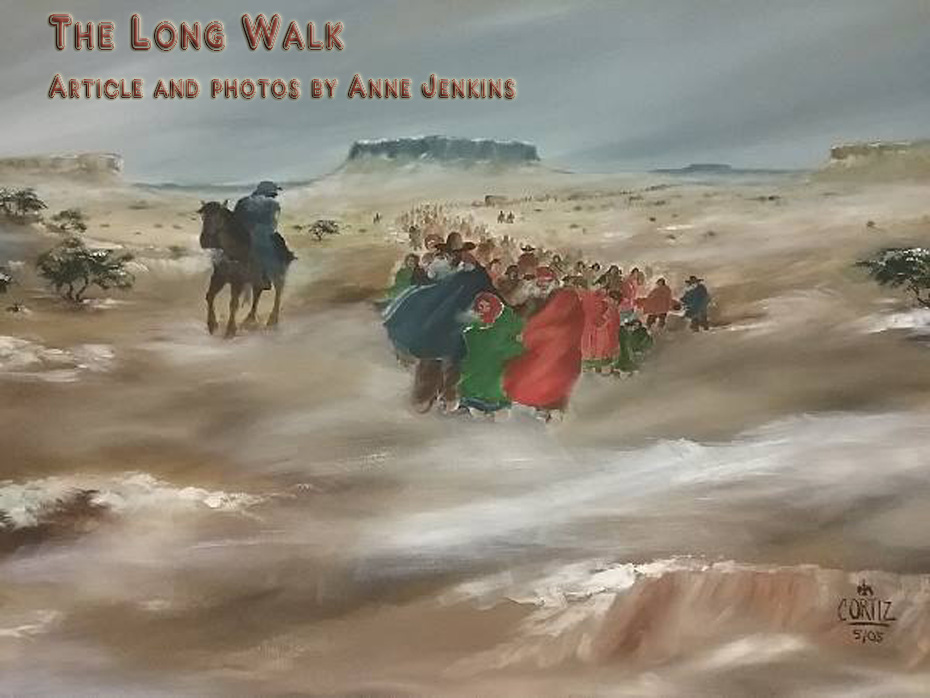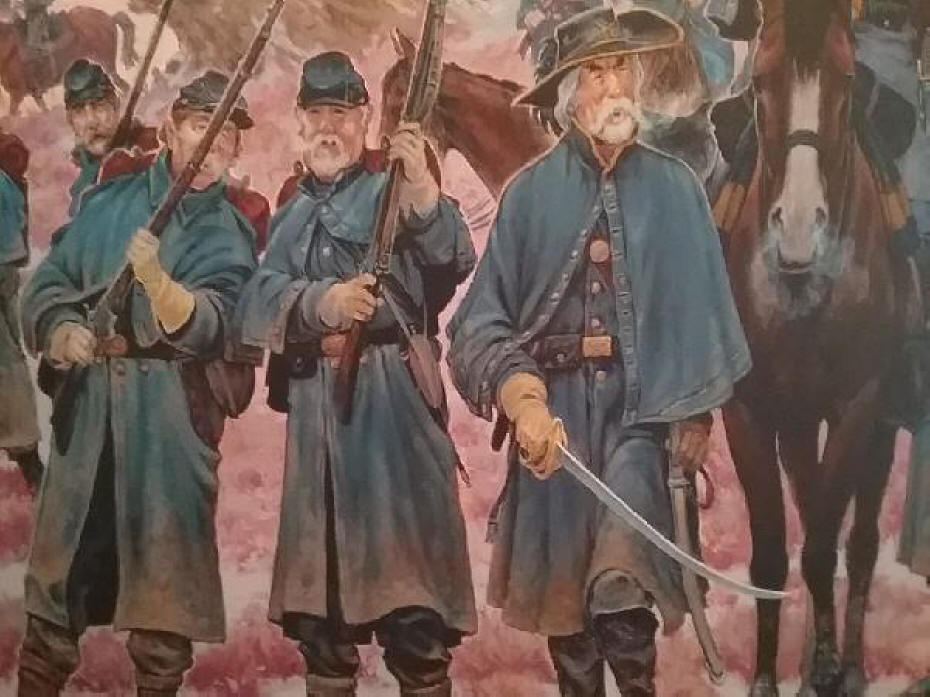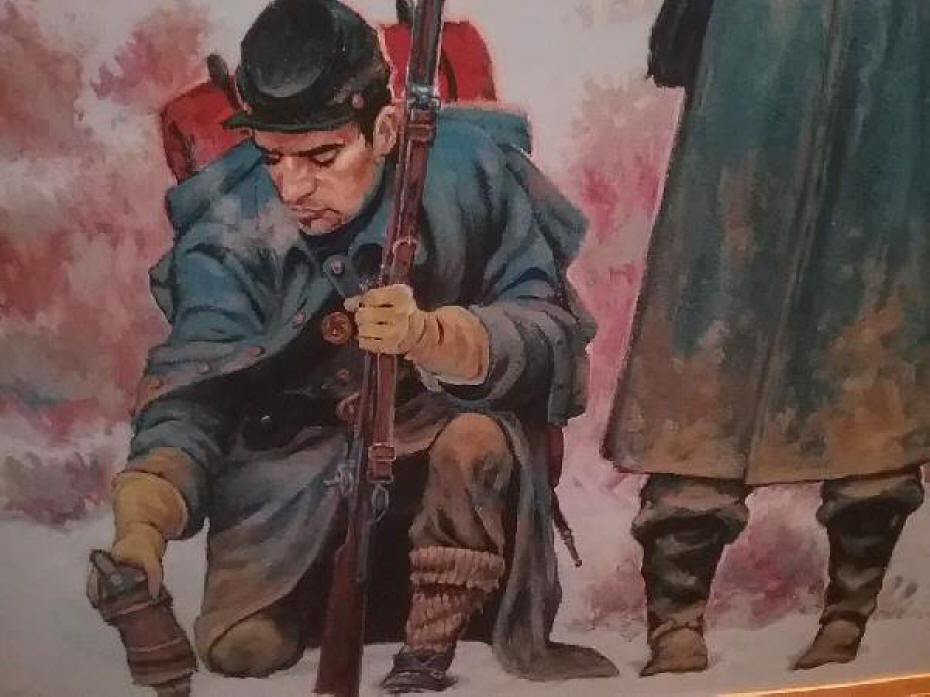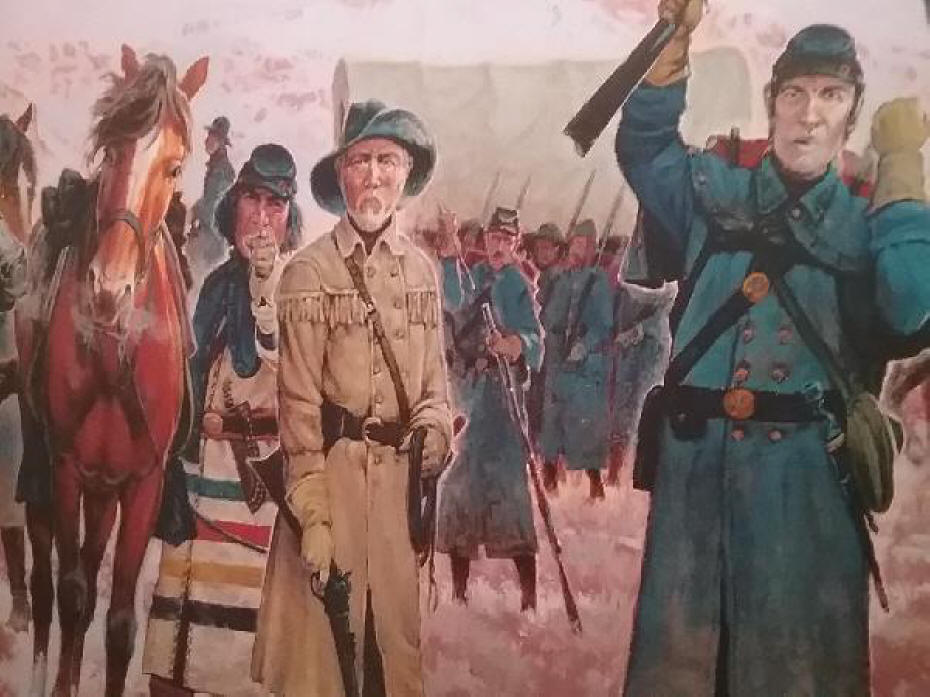
|
|
|
|
|
|
|
|
|
|
The "Manifest Destiny" doctrine of the 19th Century believed a dominant culture had the right to spread across a continent regardless of the local established culture. The US
military leader in the Territory of New Mexico was Gen.
James Carleton, a true believer of this doctrine. He
directed a scorched earth campaign in the Four Corners
region, which is a Navajo homeland. The soldiers
destroyed homes, crops and livestock and drove the
Navajo to surrender. Then, in 1863, the army rounded up
thousands of Navajo and force marched them 450 miles in
fearful conditions to their detention in a concentration
camp located in a highly unsuitable place. The Navajo
death toll during interment in the camp was 3,000,
they'd already lost 20% of the tribe during the long
walk.
The Mescalero Apache were likewise brutalized with the directive with one of the instructions being, "all Indian men of the Mescalero tribe are to be killed whenever and wherever you can find them." The Navajo and Mescalero Apache were kept together in the Bosque Redondo Indian Reservation with the idea they would suddenly become farmers and settle down. It was a dismal failure. The land was unsuitable for agriculture and the river water unhealthy. The Mescalero Apache took action in to their own hands and disappeared one night. A few elderly and ill members stayed behind keeping the camp fires burning thus tricking the solders in to thinking all was okay. A few days later those left behind also slipped away. The tribe is believed to have retreated to Mexico until they could safely return and reestablish their homeland in south central New Mexico. When it
finally dawned on the authorities in Washington this was
a disaster, General William Sherman was sent to meet
with the Navajo. As a result the Treaty of 1868 was
signed, recognising the Navajo nation as a sovereign
nation and they were allowed to return to their
homeland.
Most of the memorial is explained through art, and it's some of the most powerful I've seen in a long time. Without a doubt the biggest impact is from two murals facing each other about 4 feet apart, along curving walls depicting the forced march. On the one side the fluid, flowing, full of movement style of talented Navajo artist Shonto Begay depicts the long walk from the Navajo view. . On the other side the crisp, clear military might shown controlling the forced march by talented artist, Mike Scovel. The two artist's styles are so different, yet they mesh together perfectly. They are charged with emotion and are breathtaking. I had to return time and again to try and take it all in.
The staff told us more foreigners visit than Americans. That's a shame, it really is. Especially because Billy the Kid's grave is right next door and that's visited a lot. He was a hoodlum with a gun. It's unfortunate he gets more attention. History
shows us every nation has it's bad periods. They must
never be ignored and hidden, we need to learn from them.
This memorial is deeply moving. It was a long time in
coming, it opened in 2005 under Governor Bill
Richardson, and is listed on the State and National
Registers of Historic Places. The header is a painting
titled 'Journey of Despair' by artist Carlos Ortiz
Business information: https://www.newmexico.org/listing/fort-sumner-historic-site-bosque-redondo-memorial/2549/
|
Connect with us on:
American Roads and | ||||||||||
|
Public Disclosure--
Please Read I recently learned of a FTC law requiring web sites to let their readers know if any of the stories are "sponsored" or compensated. American Roads and Global Highways' feature writers are professional travel writers. As such we are frequently invited on press trips, also called fam trips. Most of the articles here are results of these trips. On these trips most of our lodging, dining, admissions fees and often plane fare are covered by the city or firm hosting the trip. It is an opportunity to visit places we might not otherwise be able to visit and bring you a great story. However, no one tells us what to write about those places. All opinions are 100% those of the author of that feature column. |
|||||||||||
|
Privacy Policy/ Archives /
Contributors /
Subscribe to
American Roads Books by
Kathleen Walls /
Contact /
Sponsor or Advertise/ American Roads & Global Highways Home Page
|











